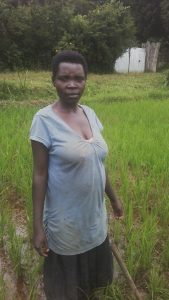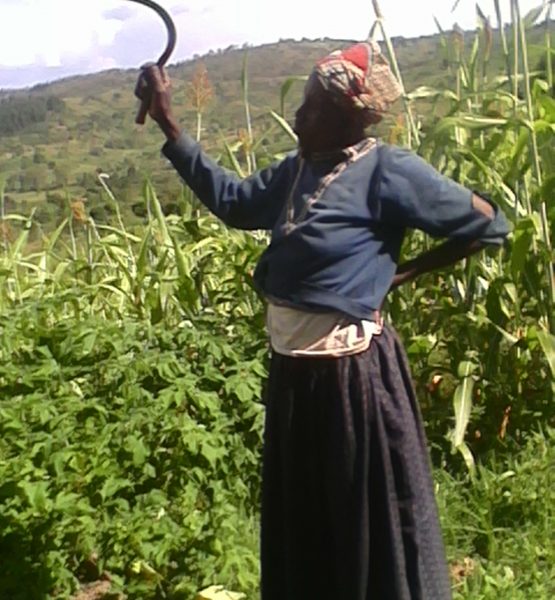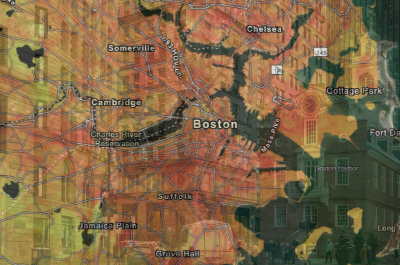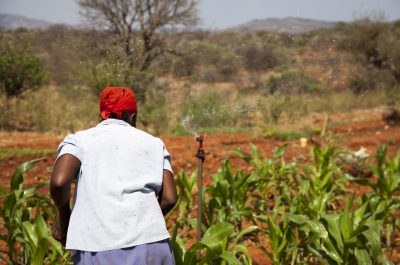Stakes rising for safety, crops in rainy Rwanda
Any recipe for agricultural success includes water. But what if that nurturing liquid becomes a destructive force?
Here at #ISeeChange, we’ve frequently told you about our observers in the United States: from sea to shining sea, California to Delaware, Minnesota to Louisiana. But we’re also hearing from people overseas, in India, Romania, New Zealand, and the African continent.
In Rwanda, where last week’s devastating rain has led to more than 50 deaths, the cycle between flooding and drought has become extreme.
Reporter Solange Nzamurera gathers observations from farmers of sorghum, rice and other crops. She’s with Developing Radio Partners, an American-based nonprofit whose work improves local reporting in several African countries. Agriculture employs more than 80% of the nation’s population and accounts for a third of Rwanda’s gross domestic product, but rural Rwandans report that in recent years, farming has become less predictable.
That’s the problem for Stephanie Ayinkamiye, who farms sorghum, a grass plant used for food, as a grain or a molasses syrup. Living in the village of Gitisi, in the Southern Rwanda district of Gisagara, Ayinkamiye has seen changes in her thirsty crops and the rain that feeds them in the last several years.
“You believe that the sun is going to shine, and then you rather see the frightening rain, which cause the erosion and wash away our soil, and crops on it,” she says. “Surely, these periods confused us.” Ayinkamiye reports that her crop yield has dropped by a third, and she believes that’s because of changing rainfall.

Precipitation problems similarly plague Josephine Nyirandabahize, who plants rice in a wetland in the same southern Rwanda region. She says a long sunny period, hot and dry, delayed growing season. What nature brought next in a late, shortened season almost seems cruel. “Then after, it rained cats and dogs, that caused the flood and washes away our crops,” she says. Over the past four growing seasons, her rice crop has diminished by a quarter. A farmer like her parents before her, Nyirandabahize says her climate has noticeably changed.
We’re especially curious about what we’re hearing in Rwanda because it’s a place where systematic on-the-ground observations by communities and scientists of changing climactic conditions have been scarce.
Weather watchers in Africa have suggested that an El Nino cycle may have been a recent influence, weighing on rain patterns that bring already bring 46 inches a year during the wet seasons. The United Nations has warned that agriculture and food security are vulnerable to climate change in African nations; we’re already seeing migrations that have happened in other places (like Syria) where climate contributes to life becoming untenable.
The acute and chronic challenges posed by changing and heavy rainfall together mean that in Rwanda, the emphasis is on mitigating the changes rather than documenting them. Rwanda’s national government is seeking to increase regional resilience through early warning and disaster preparedness. In more risky areas, prone to landslides, relocation of entire communities is underway.
Still, some newer efforts to document atmospheric and climate conditions scientifically are underway in Rwanda. MIT is working with the Ministry of Education on a climate observatory to be built atop Karisimbi in the Virunga National Park. (Some of the current challenges include protection for mountain gorillas’ habitat and management for the risk of lightning strikes.) When the climate observatory is up and running, it’ll be the first of its kind in equatorial Africa. It’ll also be managed locally, by Rwandan scientists.
At ISeeChange, we value local observations too – so we’ll keep seeking them out from our African colleagues in Rwanda and other places. We’ll also be working to explain the questions Africans are bringing to us.
But you don’t have to hop continents to see something interesting, weird, or curious in your environment. Look around your backyard – and share what you see with us.




